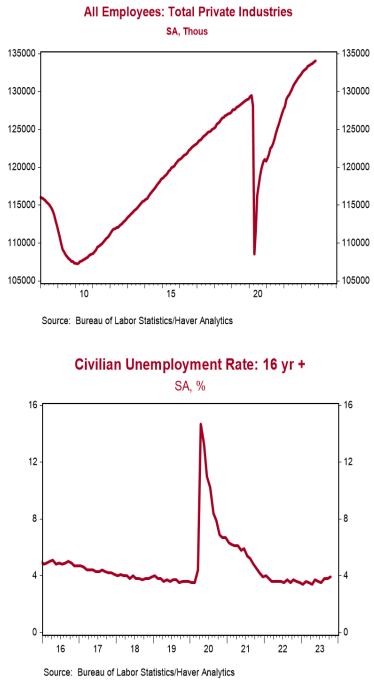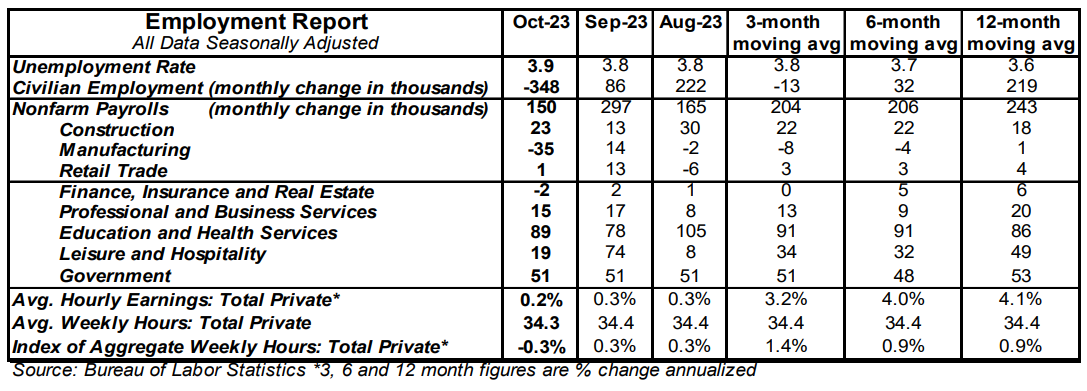- Nonfarm payrolls increased 150,000 in October, lagging the consensus expected 180,000. Payroll gains for August and September were revised down by a total of 101,000, bringing the net gain, including revisions, to 49,000.
- Private sector payrolls rose 99,000 in October but were revised down by 80,000 in prior months. The largest increase in October was health care & social assistance (+77,000). Manufacturing dropped 35,000 while government rose 51,000.
- The unemployment rate ticked up to 3.9% in October from 3.8% in September.
- Average hourly earnings – cash earnings, excluding irregular bonuses/commissions and fringe benefits – rose 0.2% in October and are up 4.1% versus a year ago. Aggregate hours declined 0.3% in October but are up 0.9% from a year ago.
Implications:
This is exactly what the Federal Reserve and many investors wanted to see: slower payroll growth, slower wage growth, and a higher unemployment rate. Unfortunately, it’s also what we would see if the economy were gradually moving toward a recession sometime next year, which is still our base case. Nonfarm payrolls rose 150,000 in October, a bit slower than the consensus expected 180,000. Yes, payrolls were artificially held down by the UAW strike at automakers; 48,000 workers were on strike last month, the most for any month since 2004. However, payroll growth in previous months was revised down by 101,000 (80,000 from the private sector). Moreover, civilian employment, an alternative measure of jobs that includes small-business start-ups, dropped 348,000 in October. Perhaps the weakest data point of all is that total hours worked in the private sector fell 0.3% in October, the equivalent of losing about 350,000 jobs. Meanwhile, average hourly earnings rose a tepid 0.2% for the month, although this figure may have been distorted by the absence of relatively higher paid autoworkers. As inflation has declined, so have increases in pay. For October, average hourly earnings were up 4.1% from a year ago, versus the year-over-year gain of 4.9% last year, in October 2022. Lurking in the background of recent trends in the labor market is that the M2 measure of the money supply is down versus a year ago, the yield curve is inverted and likely to remain so, and short-term interest rates are relatively attractive. This is a recipe for risk aversion among businesses in the year ahead and a reduction in business investment will likely lead the rest of the economy into recession. The labor market is often a lagging indicator and we expect the economy (real output) to noticeably weaken before employers stop hiring, on net. Expect continued job growth for the next few months, but a weakening and recessionary labor market is heading our way.





